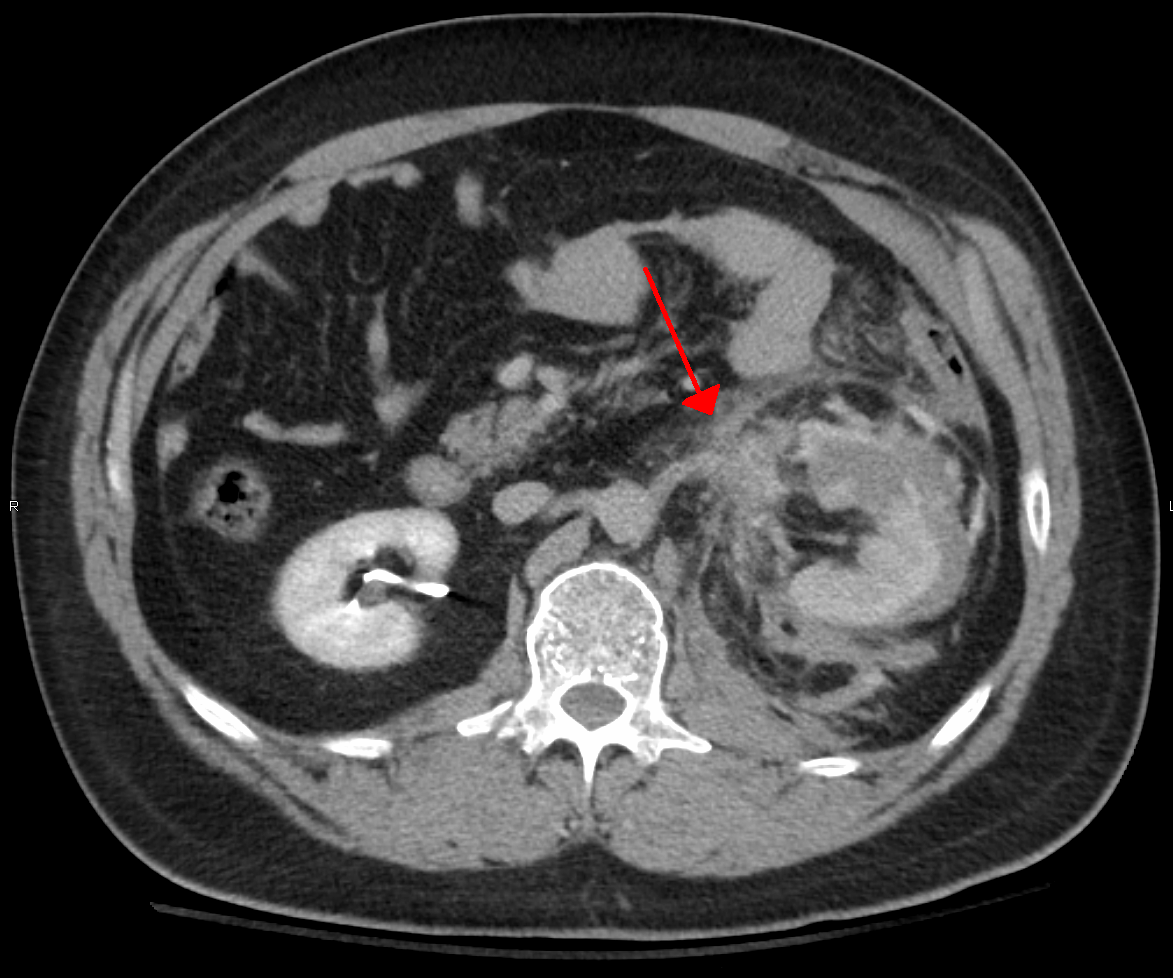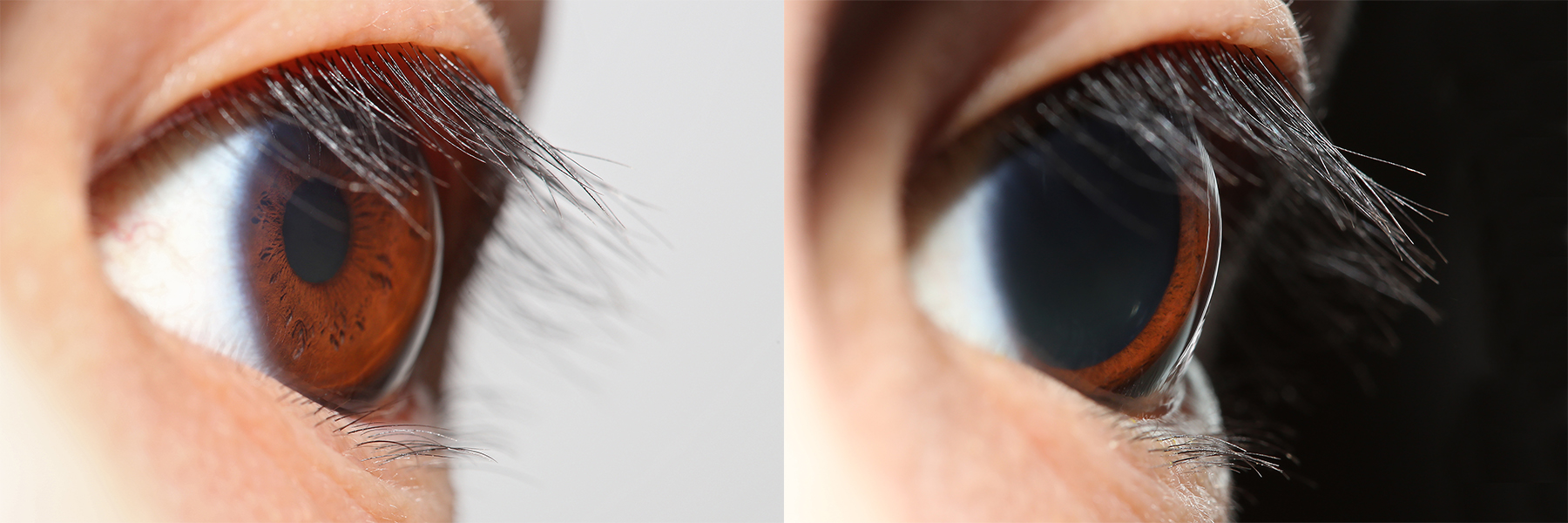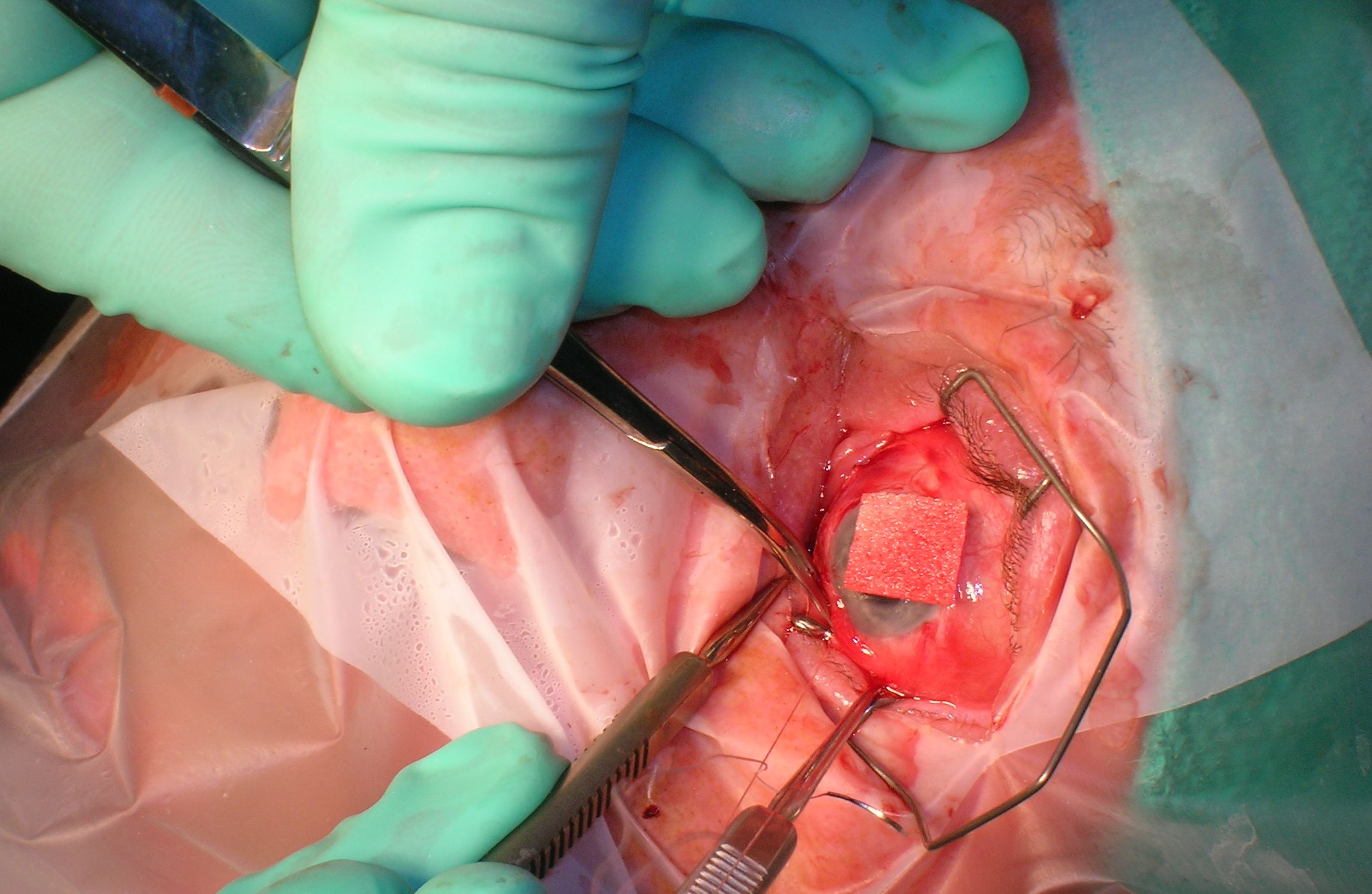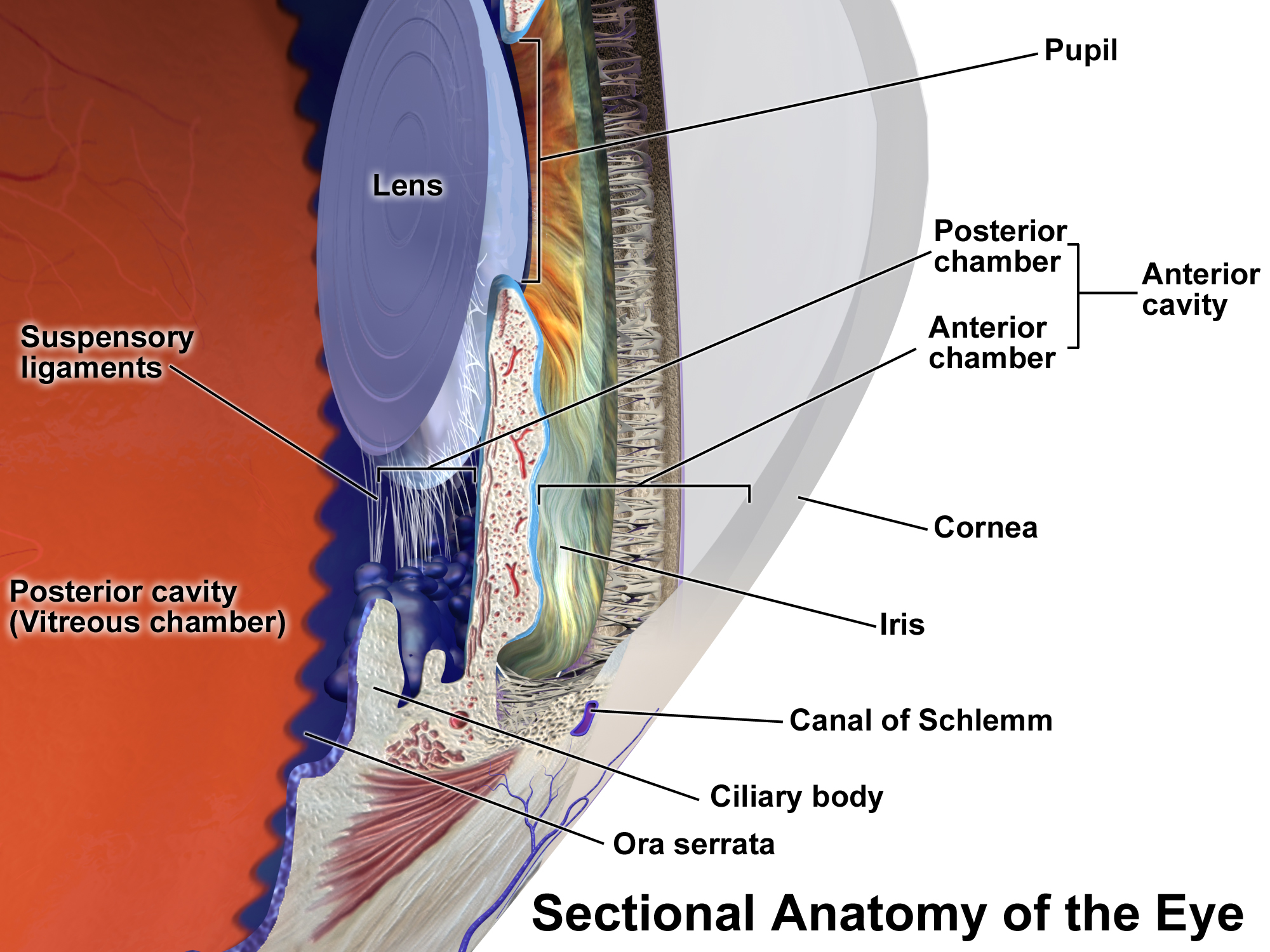|
Vossius Ring
Vossius ring (also called ''Vossius's ring'' or ''Vossius' ring'') is due to blunt trauma to the eye. When the eye is injured, a circular ring of fainted or stippled opacity is seen on the anterior surface of the lens due to brown amorphous granules of pigment lying on the capsule. It has the same diameter as the contracted pupil, and is due to impression of the iris on the lens as a result of the force of a concussion injury, which drives the cornea and iris backward. It is named after German ophthalmologist Adolf Vossius, who first described the condition in 1906. Differential Diagnosis While typically caused by blunt trauma to the eye, Vossius rings can also be a sign of previous or active anterior uveitis. Inflammation in the anterior chamber can lead to Synechia (eye) Ocular synechia is an eye condition where the iris adheres to either the cornea (i.e. ''anterior synechia'') or lens (i.e. ''posterior synechia'').F. Salmon, J. (2019) Kanski’s Clinical Ophthalmology. 9 ... [...More Info...] [...Related Items...] OR: [Wikipedia] [Google] [Baidu] |
Blunt Trauma
A blunt trauma, also known as a blunt force trauma or non-penetrating trauma, is a physical trauma due to a forceful impact without penetration of the body's surface. Blunt trauma stands in contrast with penetrating trauma, which occurs when an object pierces the skin, enters body tissue, and creates an open wound. Blunt trauma occurs due to direct physical trauma or impactful force to a body part. Such incidents often occur with road traffic collisions, assaults, and sports-related injuries, and are notably common among the elderly who experience falls. Blunt trauma can lead to a wide range of injuries including contusions, concussions, abrasions, lacerations, internal or external hemorrhages, and bone fractures. The severity of these injuries depends on factors such as the force of the impact, the area of the body affected, and the underlying comorbidities of the affected individual. In some cases, blunt force trauma can be life-threatening and may require immedia ... [...More Info...] [...Related Items...] OR: [Wikipedia] [Google] [Baidu] |
Human Eye
The human eye is a sensory organ in the visual system that reacts to light, visible light allowing eyesight. Other functions include maintaining the circadian rhythm, and Balance (ability), keeping balance. The eye can be considered as a living optics, optical device. It is approximately spherical in shape, with its outer layers, such as the outermost, white part of the eye (the sclera) and one of its inner layers (the pigmented choroid) keeping the eye essentially stray light, light tight except on the eye's optic axis. In order, along the optic axis, the optical components consist of a first lens (the cornea, cornea—the clear part of the eye) that accounts for most of the optical power of the eye and accomplishes most of the Focus (optics), focusing of light from the outside world; then an aperture (the pupil) in a Diaphragm (optics), diaphragm (the Iris (anatomy), iris—the coloured part of the eye) that controls the amount of light entering the interior of the eye; then an ... [...More Info...] [...Related Items...] OR: [Wikipedia] [Google] [Baidu] |
Opacity (optics)
Opacity is the measure of impenetrability to electromagnetic or other kinds of radiation, especially visible light. In radiative transfer, it describes the absorption and scattering of radiation in a medium, such as a plasma, dielectric, shielding material, glass, etc. An opaque object is neither transparent (allowing all light to pass through) nor translucent (allowing some light to pass through). When light strikes an interface between two substances, in general, some may be reflected, some absorbed, some scattered, and the rest transmitted (also see refraction). Reflection can be diffuse, for example light reflecting off a white wall, or specular, for example light reflecting off a mirror. An opaque substance transmits no light, and therefore reflects, scatters, or absorbs all of it. Other categories of visual appearance, related to the perception of regular or diffuse reflection and transmission of light, have been organized under the concept of cesia in an order sys ... [...More Info...] [...Related Items...] OR: [Wikipedia] [Google] [Baidu] |
Anterior
Standard anatomical terms of location are used to describe unambiguously the anatomy of humans and other animals. The terms, typically derived from Latin or Greek roots, describe something in its standard anatomical position. This position provides a definition of what is at the front ("anterior"), behind ("posterior") and so on. As part of defining and describing terms, the body is described through the use of anatomical planes and axes. The meaning of terms that are used can change depending on whether a vertebrate is a biped or a quadruped, due to the difference in the neuraxis, or if an invertebrate is a non-bilaterian. A non-bilaterian has no anterior or posterior surface for example but can still have a descriptor used such as proximal or distal in relation to a body part that is nearest to, or furthest from its middle. International organisations have determined vocabularies that are often used as standards for subdisciplines of anatomy. For example, '' Termin ... [...More Info...] [...Related Items...] OR: [Wikipedia] [Google] [Baidu] |
Lens (eye)
The lens, or crystalline lens, is a transparent biconvex structure in most land vertebrate eyes. Relatively long, thin fiber cells make up the majority of the lens. These cells vary in architecture and are arranged in concentric layers. New layers of cells are recruited from a thin epithelium at the front of the lens, just below the basement membrane surrounding the lens. As a result the vertebrate lens grows throughout life. The surrounding lens membrane referred to as the lens capsule also grows in a systematic way, ensuring the lens maintains an optically suitable shape in concert with the underlying fiber cells. Thousands of suspensory ligaments are embedded into the capsule at its largest diameter which suspend the lens within the eye. Most of these lens structures are derived from the epithelium of the embryo before birth. Along with the cornea, aqueous, and vitreous humours, the lens refracts light, focusing it onto the retina. In many land animals the shape of the lens c ... [...More Info...] [...Related Items...] OR: [Wikipedia] [Google] [Baidu] |
Pupil
The pupil is a hole located in the center of the iris of the eye that allows light to strike the retina.Cassin, B. and Solomon, S. (1990) ''Dictionary of Eye Terminology''. Gainesville, Florida: Triad Publishing Company. It appears black because light rays entering the pupil are either absorbed by the tissues inside the eye directly, or absorbed after diffuse reflections within the eye that mostly miss exiting the narrow pupil. The size of the pupil is controlled by the iris, and varies depending on many factors, the most significant being the amount of light in the environment. The term "pupil" was coined by Gerard of Cremona. In humans, the pupil is circular, but its shape varies between species; some cats, reptiles, and foxes have vertical slit pupils, goats and sheep have horizontally oriented pupils, and some catfish have annular types. In optical terms, the anatomical pupil is the eye's aperture and the iris is the aperture stop. The image of the pupil as seen from o ... [...More Info...] [...Related Items...] OR: [Wikipedia] [Google] [Baidu] |
Iris (2001 Film)
''Iris'' is a 2001 biographical drama film about novelist Iris Murdoch and her relationship with her husband John Bayley. Directed by Richard Eyre from a screenplay he co-wrote with Charles Wood, the film is based on Bayley's 1999 memoir '' Elegy for Iris''. Judi Dench and Jim Broadbent portray Murdoch and Bayley during the later stages of their marriage, while Kate Winslet and Hugh Bonneville appear as the couple in their younger years. The film contrasts the start of their relationship, when Murdoch was an outgoing, dominant individual compared to the timid and scholarly Bayley, and their later life, when Murdoch was suffering from Alzheimer's disease and tended to by a frustrated Bayley in their North Oxford home in Charlbury Road. The beach scenes were filmed at Southwold in Suffolk, one of Murdoch's favourite haunts. The film had its world premiere in Los Angeles on 14 December 2001, followed by a theatrical release in the United Kingdom on 18 January 2002 and in the ... [...More Info...] [...Related Items...] OR: [Wikipedia] [Google] [Baidu] |
Concussion
A concussion, also known as a mild traumatic brain injury (mTBI), is a head injury that temporarily affects brain functioning. Symptoms may include headache, dizziness, difficulty with thinking and concentration, sleep disturbances, a brief period of memory loss, brief loss of consciousness, problems with balance, nausea, blurred vision, and mood changes. Concussion should be suspected if a person indirectly or directly hits their head and experiences any of the symptoms of concussion. Symptoms of a concussion may be delayed by 1–2 days after the accident. It is not unusual for symptoms to last 2 weeks in adults and 4 weeks in children. Fewer than 10% of sports-related concussions among children are associated with loss of consciousness. Common causes include motor vehicle collisions, falling (accident), falls, Concussions in sport, sports injuries, and bicycle accidents. Risk factors include physical violence, drinking ethanol, alcohol and a prior history of concussion. ... [...More Info...] [...Related Items...] OR: [Wikipedia] [Google] [Baidu] |
Injury
Injury is physiological damage to the living tissue of any organism, whether in humans, in other animals, or in plants. Injuries can be caused in many ways, including mechanically with penetration by sharp objects such as teeth or with blunt objects, by heat or cold, or by venoms and biotoxins. Injury prompts an inflammatory response in many taxa of animals; this prompts wound healing. In both plants and animals, substances are often released to help to occlude the wound, limiting loss of fluids and the entry of pathogens such as bacteria. Many organisms secrete antimicrobial chemicals which limit wound infection; in addition, animals have a variety of immune responses for the same purpose. Both plants and animals have regrowth mechanisms which may result in complete or partial healing over the injury. Cells too can repair damage to a certain degree. Taxonomic range Animals Injury in animals is sometimes defined as mechanical damage to anatomical struct ... [...More Info...] [...Related Items...] OR: [Wikipedia] [Google] [Baidu] |
Ophthalmologist
Ophthalmology (, ) is the branch of medicine that deals with the diagnosis, treatment, and surgery of eye diseases and disorders. An ophthalmologist is a physician who undergoes subspecialty training in medical and surgical eye care. Following a medical degree, a doctor specialising in ophthalmology must pursue additional postgraduate residency training specific to that field. In the United States, following graduation from medical school, one must complete a four-year residency in ophthalmology to become an ophthalmologist. Following residency, additional specialty training (or fellowship) may be sought in a particular aspect of eye pathology. Ophthalmologists prescribe medications to treat ailments, such as eye diseases, implement laser therapy, and perform surgery when needed. Ophthalmologists provide both primary and specialty eye care—medical and surgical. Most ophthalmologists participate in academic research on eye diseases at some point in their training and many incl ... [...More Info...] [...Related Items...] OR: [Wikipedia] [Google] [Baidu] |
Adolf Vossius
Adolf Vossius (10 February 1855, Zempelburg – 28 June 1925, Giessen) was a German ophthalmologist. He studied medicine at the universities of Königsberg and Giessen, receiving his doctorate in 1879. Following graduation, he remained at Giessen as an assistant to Arthur von Hippel at the university eye clinic. In 1882 he obtained his habilitation at Königsberg, where five years later, he was named an associate professor. In 1890 he returned to the University of Giessen as a full professor of ophthalmology. At Giessen he opened a new eye clinic on ''Friedrichstrasse''. In 1906 he described a ring-shaped pigment deposit on the anterior lens surface following trauma to the eye, an injury now known as " Vossius' ring" or as "Vossius' lenticular ring". He described the condition in a paper titled "''Über ringförmige Trübungen an der Linsenvorderfläche nach Kontusionsverletzungen des Auges''". Selected works * ''Grundriss der Augenheilkunde'', 1888 – Outline of oph ... [...More Info...] [...Related Items...] OR: [Wikipedia] [Google] [Baidu] |
Anterior Uveitis
Uveitis () is inflammation of the uvea, the pigmented layer of the eye between the inner retina and the outer fibrous layer composed of the sclera and cornea. The uvea consists of the middle layer of pigmented vascular structures of the eye and includes the iris, ciliary body, and choroid. Uveitis is described anatomically, by the part of the eye affected, as anterior, intermediate or posterior, or panuveitic if all parts are involved. Anterior uveitis ( iridocyclitis) is the most common, with the incidence of uveitis overall affecting approximately 1:4500, most commonly those between the ages of 20–60. Symptoms include eye pain, eye redness, floaters and blurred vision, and ophthalmic examination may show dilated ciliary blood vessels and the presence of cells in the anterior chamber. Uveitis may arise spontaneously, have a genetic component, or be associated with an autoimmune disease or infection. While the eye is a relatively protected environment, its immune mechanisms ... [...More Info...] [...Related Items...] OR: [Wikipedia] [Google] [Baidu] |





